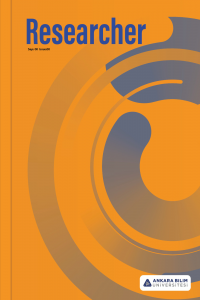Mardin Artuklu Üniversitesinde Öğrenim Gören Lisanslı Sporcuların Beden Eğitimi ve Spor Dersine Karşı Tutum ve Düzeylerinin Spor ve Farklı Değişkenler Açısından İncelenmesi
Tutum, Beden eğitimi ve spor, Öğrenci
Examination Of Attitudes And Levels Of Licensed Athletes Attending Mardin Artuklu University Against Physical Education And Sports Lesson İn Terms Of Sport And Different Variables
Attitude, Physical education and sport, Student,
___
- Aicinena, S. (1991). The teacher and student attitudes toward physical education. Phys Educ.
- Carlson, T.B. (1994). Why students hate, tolerate, or love gym: A study of attitude formation and associated behaviors in physical education (Doctoral dissertation, University of Massachusetts, 1994). Dissertation Abstracts International.
- Carlson T.B. (1995). We Hate Gym: Student Alienation From Physical Education. J Teach Phys Educ.
- Chung, M.H. & Phillips, D.A. (2002). The relationship between attitude toward physical education and leisuretime exercise in high school students. Phys Educ.
- Demirhan, G. & Altay, F. (2001). Lise birinci sınıf öğrencilerinin beden eğitimi ve spora ilişkin tutum ölçeği II. Spor Bilimleri Dergisi.
- Ertürk, S. (1998). Eğitimde Program Geliştirme. Ankara: Meteksan Matbaacılık.
- Figley. G.E. (1985). Determinants of attitudes toward physical education. J Teach Phys Educ.
- King, M.H. (1994). Student attitudes toward physical education at the intermediate level (Masters thesis, Memorial University of Newfoundland, Canada). Masters Abstracts International.
- Koca, C. & Demirhan, G. (2004). An examination of high school students’ attitudes toward physical education with regard to sex and sport participation. Percept Motor Skill.
- Luke, M.D. & Kope, D.L. (1994). Student attitudes toward teacher behavior and program content in school physical education. Phys Educ.
- National Association for Sport and Physical Education (NASPE), (1995). Moving into the future: National Physical Education Standarts: A Guide to Content and Assessment. Boston: CB/McGraw-Hill.
- Pate, R., Corbin, C. & Pangrazi, B. (1998). Physical activity for young people. President’s Council on Physical Fitness and Sports Research Digest.
- Rice, P.L. (1988). Attitudes of high school students towards physical education activities, teachers and personal health. Phys Educ.
- Ryan, S., Fleming, D. & Maina, M. (2003). Attitudes of middle school students toward their physical education teachers and classes. Phys Educ.
- Safrit, M.J. & Wood, T.M. (1995). Introduction To Measurement in Physical Education and Excercice Science. (3rd Ed.) St. Louis, MO: Mosby.
- Silverman, S. & Subramaniam, P.R. (1999). Student attitude toward physical education and physical activity: a rewiev of measurement ıssues and out- comes. J Teach Phys Educ.
- Smoll, F.L. & Schutz, R.V. (1980). Children’s attitudes towards physical activity: a longitudial analysis. J Sport Psychol.
- Subramaniam, P.R. & Silverman, S. (2000). Validation of scores from an ınstrument assessing student attitude toward physical education. Meas Physical Educ Excer Sci.
- Şişko, M. & Demirhan, G. (2002). İlköğretim okulları ve liselerde öğrenim gören kız ve erkek öğrencilerin beden eğitimi dersine ilişkin tutumları. Hacettepe Üniversitesi Eğitim Fakültesi Dergisi.
- Tannehill, D. & Zakrajsek, D. (1993). Student attitudes towards physical education: A multicultural study. J Teach Phys Educ.
- Tezbaşaran, A. (1997). Likert Tipi Ölçek Geliştirme Kılavuzu. Ankara: Türk Psikologlar Derneği Yayınları.
- Treanor, L., Graber, K., Housner, L. & Wiegand, R., (1998). Middle school students’ perceptions of coeducational and samesex physical education classes. J Teach Phys Educ.
- Weinberg, R., Tenenbaum, G., McKenzie, A., Jakson, S., Ansel, M., Grove, R. & Gogarty, G. (2001). Motivation for youth participation in sport and physical activity: relationship to culture, self reported activity levels and gender. Int J Sport Psychol.
- ISSN: 2717-9494
- Yayın Aralığı: Yılda 2 Sayı
- Başlangıç: 2013
- Yayıncı: Ankara Bilim Üniversitesi
Milli Mücadele Dönemi Türk - Gürcü ilişkileri
Hemşirelik Öğrencilerinin İletişim Beceri Düzeylerinin Belirlenmesi
Seda SÖGÜT, Eda CANGÖL, Ayten DİNÇ
Garzan Havzasında Jeomorfolojik Peyzaj ve Etkileri
Zihinsel Engelli Çocuğu Olan Ebeveynlerin Psikolojik Durumları ile Bakım Yükünün Değerlendirilmesi
Mehtap METİN KARAASLAN, Ayda ÇELEBİOĞLU
Folklorik Açıdan Bazı Yörelere Göre Türk Mutfağının Kısa Bir Değerlendirmesi
Çağatay ÜSTÜN, Nuray DEMİRCİ GÜNGÖRDÜ
Geleneklerin Aktarım Sürecinde Mutfak Kültürünün Rolü: Kilis Örneği
Fatih YILDIZ, Melda AKBABA, Gamze ÖZEL, Melih AYDIN
Sevil BÜYÜKALAN FİLİZ, Cihan CANBOLAT, Ekin KAKAN
Habibe BAY, Şebnem KURUL, Hafize ÖZTÜRK CAN
Yalova İli Yerli Ağzının Çocuk Oyunlarıyla İlgili Söz Varlığı
